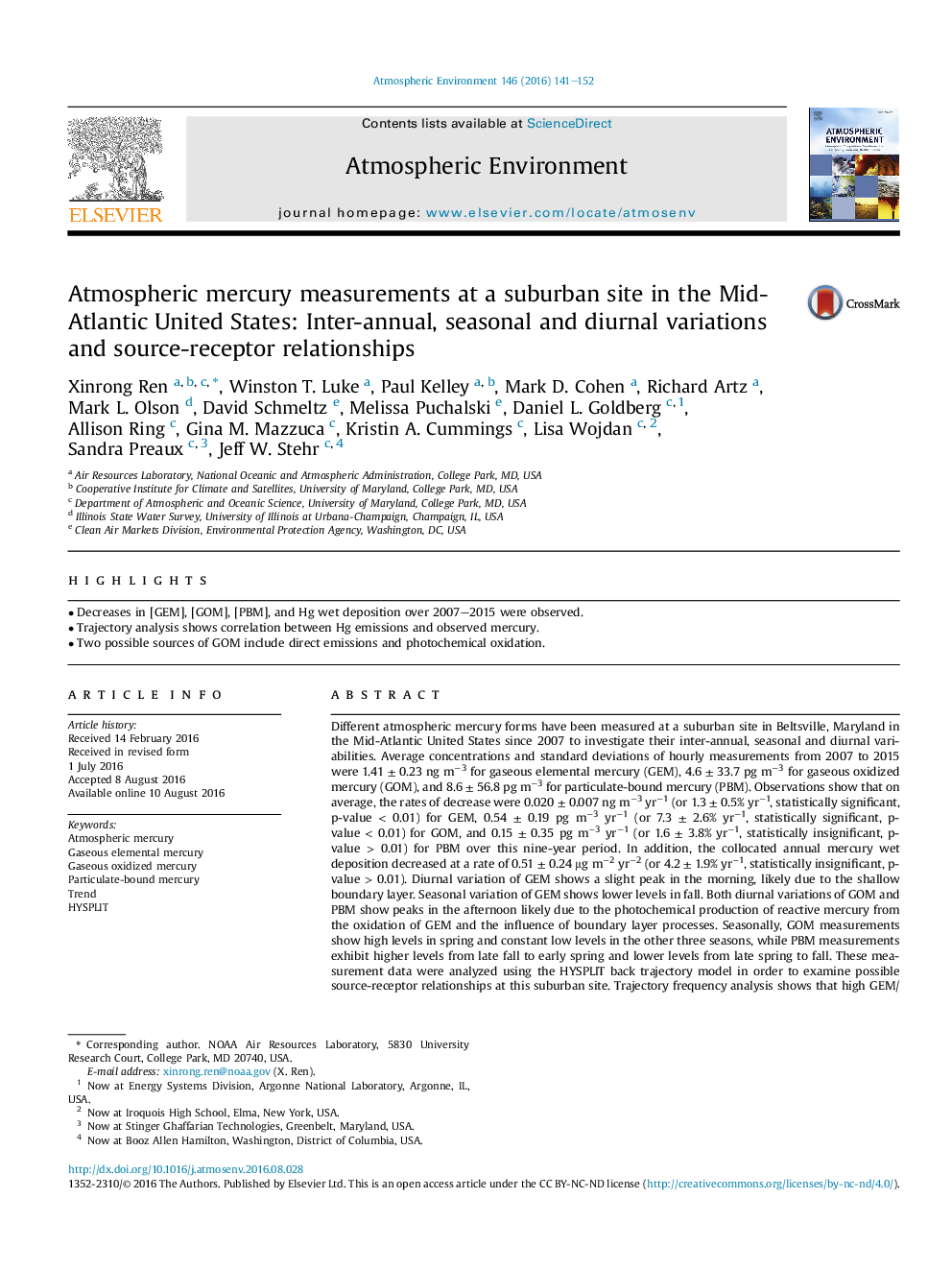| Article ID | Journal | Published Year | Pages | File Type |
|---|---|---|---|---|
| 5753269 | Atmospheric Environment | 2016 | 12 Pages |
â¢Decreases in [GEM], [GOM], [PBM], and Hg wet deposition over 2007-2015 were observed.â¢Trajectory analysis shows correlation between Hg emissions and observed mercury.â¢Two possible sources of GOM include direct emissions and photochemical oxidation.
Different atmospheric mercury forms have been measured at a suburban site in Beltsville, Maryland in the Mid-Atlantic United States since 2007 to investigate their inter-annual, seasonal and diurnal variabilities. Average concentrations and standard deviations of hourly measurements from 2007 to 2015 were 1.41 ± 0.23 ng mâ3 for gaseous elemental mercury (GEM), 4.6 ± 33.7 pg mâ3 for gaseous oxidized mercury (GOM), and 8.6 ± 56.8 pg mâ3 for particulate-bound mercury (PBM). Observations show that on average, the rates of decrease were 0.020 ± 0.007 ng mâ3 yrâ1 (or 1.3 ± 0.5% yrâ1, statistically significant, p-value < 0.01) for GEM, 0.54 ± 0.19 pg mâ3 yrâ1 (or 7.3 ± 2.6% yrâ1, statistically significant, p-value < 0.01) for GOM, and 0.15 ± 0.35 pg mâ3 yrâ1 (or 1.6 ± 3.8% yrâ1, statistically insignificant, p-value > 0.01) for PBM over this nine-year period. In addition, the collocated annual mercury wet deposition decreased at a rate of 0.51 ± 0.24 μg mâ2 yrâ2 (or 4.2 ± 1.9% yrâ1, statistically insignificant, p-value > 0.01). Diurnal variation of GEM shows a slight peak in the morning, likely due to the shallow boundary layer. Seasonal variation of GEM shows lower levels in fall. Both diurnal variations of GOM and PBM show peaks in the afternoon likely due to the photochemical production of reactive mercury from the oxidation of GEM and the influence of boundary layer processes. Seasonally, GOM measurements show high levels in spring and constant low levels in the other three seasons, while PBM measurements exhibit higher levels from late fall to early spring and lower levels from late spring to fall. These measurement data were analyzed using the HYSPLIT back trajectory model in order to examine possible source-receptor relationships at this suburban site. Trajectory frequency analysis shows that high GEM/GOM/PBM events were generally associated with high frequencies of the trajectories passing through areas with high mercury emissions, while low GEM/GOM/PBM levels were largely associated the trajectories passing through relatively clean areas. This study indicates that local and regional sources appear to have a significant impact on the site and these impacts appear to have changed over time, as the local/regional emissions have been reduced.
